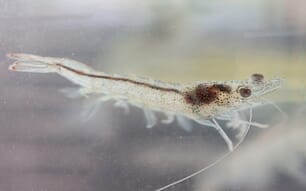The study focuses on the farming of mola, a small indigenous fish species that can be easily grown in small household ponds. Small fish, including mola that are eaten whole, are an excellent source of micronutrients such as iron, zinc, calcium, vitamin A and vitamin B12, as well as fatty acids and animal protein.
The paper published in the peer-reviewed journal Aquaculture specifically highlights the production of mola as a way to increase intake of Vitamin A. Vitamin A deficiency (VAD) is the leading cause of preventable blindness in children and increases the risk of disease and death from severe infections. In pregnant women VAD causes night blindness and may increase the risk of maternal mortality.
While Bangladesh has implemented a successful vitamin A supplementation program over more than two decades and has been fortifying vegetable oil with vitamin A since 2012, the prevalence of VAD remains a serious public health problem in Bangladesh.
Shakuntala Haraksingh Thilsted, Senior Nutrition Scientist, WorldFish explains: “There is a growing body of evidence that highlights the nutritional and health benefits of small fish. In Bangladesh, a country with as many as 3.9 million household ponds, mola, a low-cost, locally-sourced food, presents a compelling opportunity to increase nutrition and health outcomes for thousands of people.”
The report says that an 11-year, $23 million project would increase average daily vitamin A intake to the extent that 3000 lives and 100,000 disability adjusted-life years (DALYs) would be saved. DALYs are a measure of overall disease burden, expressed as the number of years lost due to ill-health, disability or early death.
As reported in the paper, the cost would be significantly lower over a period of twenty years, and would have greater health benefits than a national vitamin A wheat flour fortification program.
Being rich in micronutrients, mola are highlighted as particularly important in the first 1000 days of a child’s life from conception through the age of 2. WorldFish scientists have also highlighted how small fish can be made into a chutney, a simple way of increasing the nutritional content of meals. Mola can be farmed alongside other fish species including carp in ponds and can be harvested frequently, making it ideal for regular household consumption.




